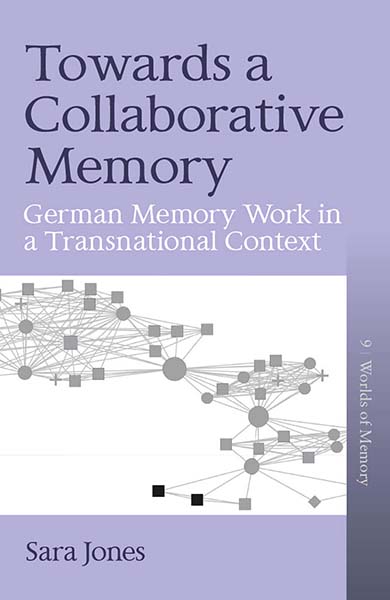Sara Jones, University of Birmingham
The idea for Towards a Collaborative Memory came when I was researching my last book on memories of the East German Stasi. I was reading press releases from the Stasi Prison Memorial at Berlin Hohenschönhausen and came across one in which the then Director of the Memorial used a visit to memorials in the Czech Republic to criticise German memory culture. I had spent a long time researching memorials in Germany – especially Hohenschönhausen – but had never really considered how they collaborated with partners in other countries and how they might use those collaborations to further their own politics of memory.
I began my research examining Hohenschönhausen’s press releases and comparing these with those of one of its collaborators, the prison memorial in Sighetu Marmaţiei in Romania. However, it was meeting Professor Jenny Wüstenberg (now Nottingham Trent University) at the German Studies Association conference in 2013 that really inspired the shape of the book. Jenny presented her pioneering work on the use of Social Network Analysis (SNA) for the exploration of formal European networks of memory entrepreneurs. The method was new to me, but I could see its potential for visualising and quantifying the informal networks created by and through Hohenschönhausen’s cross-border collaborations, which, as the book shows, extend well beyond Europe’s borders.
This put me in brand new territory. I had to learn the premises of SNA, the terms used to describe actors in the networks and their relationships to one another, how influence could be measured and what the different measures meant. I had to learn how to put the data I gathered from the websites of my chosen organisations about 100s of transnational collaborations into a format that could be read by SNA software. I had to learn how to read the output of the various algorithms and how to manipulate the visualisations so that they were legible.
As a scholar trained in narrative, and especially literary, analysis, this was an enormous shift. There were stumbling blocks along the way – moments when I had to re-do spreadsheets or ditch a week’s work because the method was not right, or I had found a better way to explore what I wanted to explore. This was on top of the more familiar textual analysis of the reams of data that I had gathered and getting to grips with coding in Nvivo to ensure that I could manage this volume of material rigorously and systematically.
You might ask, was it worth it? The simple answer is “yes”, although there were certainly moments of doubt along the way. The methodology opened new questions for me. It laid bare the structure of these networks in which actors such as the German Foreign Office or German political foundations were in positions of potential influence. The institutions that formed the focus of the study – Hohenschönhausen, the Stasi Records Archive, and the Federal Foundation for the Reappraisal of the SED Dictatorship – , were part of the “export product” of memory “made in Germany”. These findings helped me to connect with emerging discussions in the Department of Modern Languages at the University of Birmingham around “decoloniality”. Thinking about coloniality in terms of epistemics – who has the right to know and be the subject of knowledge – helped me to see the potential pitfalls of exporting a model of memory and human rights that emerges from one part of the world, but it declared to be universal.
But it was also worth it for how it enabled me to develop as a scholar, and for my understanding of what it is we do in the undisciplined discipline of Modern Languages. In the time taken to write the book, I was promoted to Full Professor: the title I took in 2018 is Professor of Modern Languages. A colleague asked me recently why I chose that title over, say, Professor of Memory Studies. For me, the book exemplifies the answer to that question.
Modern Languages has long been plagued by the question of whether it is a discipline, with a common agenda and disciplinary norms. Its lack of disciplinary identity can cause difficulties in terms of recruitment, funding and institutional understanding of what it is we do. I argue that what we do well is make connections. Of course, all research is about identifying links between different phenomena. However, researchers in Modern Languages excel at bringing together objects of study, methodologies, theoretical frameworks, and ideas that one rarely finds together elsewhere: indeed, our Departmental research at Birmingham is linked by the idea of “interconnectedness”. We compare art forms, across national cultures and time periods, we combine the study of history with the study of culture, analyse texts using concepts from philosophy or sociology. We do this not because we are disciplinary magpies – picking up the next shiny thing – but because to understand the complex cultures and societies that are the primary focus of our work, we need to understand the connections between multiple aspects of those societies.
Towards a Collaborative Memory is at its core about understanding relationships. Relational sociology reminds us that at the point of interconnection something new emerges. I hope that the book might show how using our skills in making connections can take us in unexpected directions, challenge our ways of thinking, and bring forward new ideas about how memory is – and could be –shared across borders.

